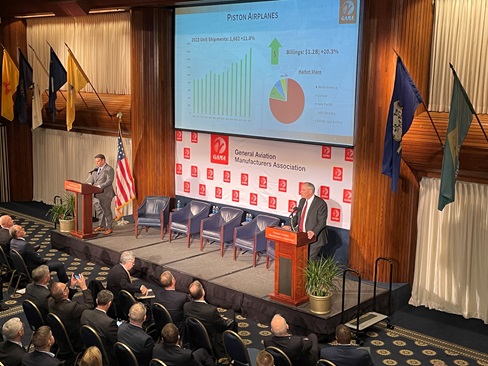Mixed results for first quarter aircraft shipments
A mixed first quarter of 2017 for aircraft shipments brought increases in airplane and helicopter shipments, but a decline in total billings, said the General Aviation Manufacturers Association.
Future growth would be driven by the introduction of new products, spotlighting the importance of congressional action to pass certification reform legislation, said GAMA President Pete Bunce in a May 11 news release.
Shipments of piston airplanes increased 6.3 percent in 2017’s first quarter to 203, from 191 in the same period in 2016.
Business jet shipments increased by 6.6 percent, from 122 to 130 units.
Turbine helicopter shipments increased by 11.2 percent, from 116 units in 2016’s first quarter to 129 units in the first quarter of 2017.
The turboprop airplane segment saw deliveries decline by 7.3 percent, from 109 units to 101 units.
First-quarter piston helicopter deliveries were off, declining from 60 units in 2016 to 54 units in 2017, GAMA reported.
Company figures of note for the first quarter of 2017 included Honda Aircraft Company shipping 15 HA-420 HondaJets, up from three in the first quarter of 2016, boosting billings from $13.5 million to $72,750,000, after gaining an FAA production certificate for the advanced light jet last year. Robinson Helicopter shipped 69 units worth $35 million, up from 61 units valued at $31 million in the same period in 2016.
In December, the FAA released a final rule effective in August to reform small aircraft certification standards with provisions that allow regulators to respond more efficiently to industry innovations in aircraft design and manufacturing methods. GAMA called for continued progress in that direction.
“General aviation has been and remains a critical economic engine for our country,” said Bunce. “It is an essential part of the national transportation system, and the Federal Aviation Administration plays a key role in certifying aircraft, engines and avionics. But if the process for certification is not at its most efficient, products are prevented from reaching the market in a timely fashion. Congress has an opportunity to change that, removing these unnecessary roadblocks to a safer, more efficient aviation industry through certification and regulatory reform. Congress must take decisive steps to pass certification reform this year.”
In testimony before a Senate committee in March, GAMA Board member Greg Fedele, president of Sabreliner Aviation and executive vice president of corporate development for Innova Aerospace, noted inefficiencies in the FAA’s Organization Designation Authorization program that he said add delays and costs to certification projects.
“If you can help us bring efficiencies through reform, the industry will respond with growth and improved safety technology,” he said.
Fedele also urged congressional action to direct “FAA engagement and leadership with other aviation authorities to help facilitate efficient validation and acceptance of FAA safety standards and product approvals globally, and ensuring an effective risk-based aviation safety system.”


